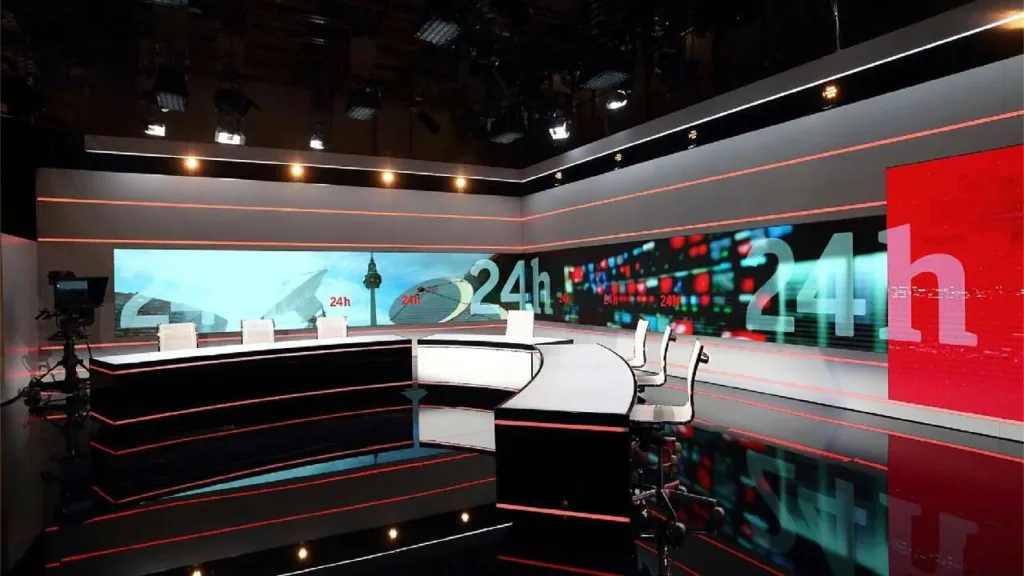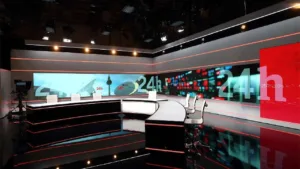RTVE has initiated a project to upgrade its studios in Spain with advanced technology, providing viewers with more engaging content presentation. All studios are equipped with cutting-edge (augmented reality) AR technology for greater creative control and mixed reality (MR) workflows in post-production.

Alfalite has supplied 964 ModularPix Pro 1.9 ORIM LED panels to RTVE, Spain’s national state-owned public television broadcaster. The operation is managed by Datos Media Technologies, which won the concession bid. To find the ideal screens for their studios, RTVE’s technical team evaluated various market solutions and engaged an independent laboratory for testing. They chose Alfalite’s ModularPix Pro VP panels due to their viewing angle stability and ability to film the LED wall from extreme camera angles.
Alfalite cabinets offer low average consumption (35 watts) and low electromagnetic compatibility levels (EMC Certification), allowing them to coexist with other electronic systems without interference. Datos Media Technologies is responsible for integrating Alfalite LED screens into RTVE’s studios and will employ Mo-Sys camera tracking systems embedded in Alfalite cabinets for news bulletins. RTVE will also utilize Epic Games’ Unreal Engine as its graphics engine.
RTVE allocated 240 Alfalite LED panels to the “Canal 24h” news set in Madrid’s Torrespaña and installed 550 Alfalite LED cabinets across 14 regional centers throughout the country. The weather studio at the Sant Cugat (Barcelona) production center will receive a 174-module Alfalite LED wall for dynamic climate reporting.
What Alfalite Means by AR

As far as Alfalite’s immersive technology goes, it is probably tied to something that the company has been touting for a while about its VP XR series displays. The LED screens function as an interactive light source, allowing for extensions of objects partially generated by CGI to create a 3D environment. The synchronized movement between the camera, stage, character, and LED screen further contributes to this immersive experience. There should be a marked improvement in post-production workflow and a reduction in costs associated with setting up complex scenarios.
The key features of these LED screens include an expanded color gamut, HDR10 support, ultra-low latency, and high-frequency display. Pixel-by-pixel calibration and phase-shift migration ensure accurate offset adjustment and seamless integration with cameras. It’s a significant addition to the market of LED screens for virtual production and mixed reality applications, although it is mixed reality in so far as post-production is involved, whether it is live or not, and not an AR application.

